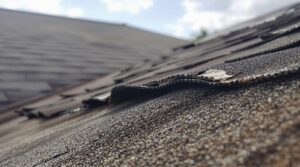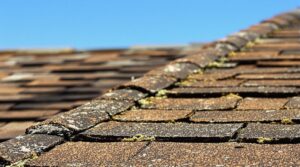Yes, You Absolutely Should Tell Your Insurance About Your New Roof!
Think of your new roof as a shiny new helmet for your home – wouldn't you want your insurance company to know about this amazing upgrade? Let's dive into why keeping your insurer in the loop is a smart move.
First off, here's the deal: updating your insurance about your new roof isn't just a nice-to-have – it's a must-do. Just like you'd update your relationship status on social media, your insurance company needs to know about this major change in your home's life.
What's in it for you? Well, imagine getting a reward for being responsible – that's exactly what happens! Insurance companies often slash premiums by 5% to 35% for homes with new roofs. That's real money back in your pocket, folks!
Here's what you'll need to share:
- Installation date (when did your home get its fancy new hat?)
- Materials used (what's it made of?)
- Contractor details (who did the handiwork?)
But there's more to it than just savings. Failing to report your new roof could turn into a real headache later. Insurance companies might deny claims or create coverage gaps if they discover an unreported roof upgrade – and trust me, that's not a surprise party you want to attend!
Want to make the most of your investment? Document everything, take photos, and keep those receipts. Think of it as creating a birth certificate for your new roof – the more details, the better!
Remember: a new roof is more than just curb appeal – it's an investment in your home's protection. Don't let your insurance company be the last to know about this significant upgrade!
Key Takeaways
Think of your new roof as a shiny new helmet for your home – wouldn't you want your insurance company to know about this upgraded protection? Let's dive into why keeping your insurer in the loop is a smart move.
First things first – staying silent about your roof upgrade isn't just risky; it could come back to haunt you when you least expect it. Insurance companies love pleasant surprises (like your responsible home maintenance), not unpleasant ones (like discovering undisclosed improvements during a claim).
Here's the cherry on top: your wallet might thank you! Many insurers offer sweet premium discounts between 5-35% for new roofs. Why? Because a sturdy new roof means less risk of water damage, storm issues, and other costly headaches they'd rather avoid.
Want to nail the documentation process? Think of it as creating your roof's digital passport:
- Snap before-and-after photos
- Keep installation permits handy
- Save warranty paperwork
- Store your contractor's contact details
Hiding your roof upgrade is like wearing a designer outfit but telling everyone it's from a thrift store – it just doesn't make sense! Plus, it could land you in hot water with potential fraud charges and policy cancellations.
Remember, a well-documented new roof isn’t just about insurance – it’s your home’s crown jewel that boosts property value and opens doors to better coverage options. Ready to make that call to your insurer? Additionally, having comprehensive documentation of your new roof can simplify the claims process in case of future damage, ensuring that you don’t face unnecessary delays. Furthermore, many insurers offer incentives for homeowners who invest in high-quality roofing, making your policy more valuable in the long run. Don’t hesitate to ask about an insurance check for roof repair, as it could provide you with peace of mind knowing that your investment is protected.
Why Informing Your Insurance Company Is Critical
When homeowners install a new roof, informing their insurance company becomes a critical obligation that directly impacts their coverage and protection. Failure to meet these coverage obligations can result in serious consequences, including claim denials, coverage gaps, and potential policy cancellations.
Following proper documentation procedures is essential for maintaining accurate coverage and streamlining future claims processing. Insurance companies require detailed information about the new roof to guarantee proper policy updates and premium calculations.
This includes providing specifics about installation dates, materials used, and contractor information. By promptly notifying insurers of roof replacements, homeowners maintain policy compliance and establish clear documentation of their property's condition. This proactive approach helps prevent disputes over claim eligibility and ensures appropriate coverage for future roof-related incidents. Homeowners can expect premium reductions of 20% on average when properly documenting and reporting a new roof installation.
The Financial Benefits of Reporting a New Roof

Homeowners who report their new roof installations to insurance providers can access substantial financial advantages. Premium maximization opportunities include discounts ranging from 5% to 35%, with State Farm offering up to 35% reductions for Class 4 impact-resistant roofs. These savings are particularly significant in storm-prone regions.
Cost evaluation reveals multiple long-term benefits, including property value increases of $12,000 to $15,000 and reduced maintenance expenses through extended warranties. New roofs also contribute to energy efficiency, generating additional savings over time.
Insurance benefits extend beyond premium reductions to include enhanced coverage options, such as guaranteed replacement cost coverage and specialized protection packages. The combination of sustained premium discounts, improved property value, and extensive coverage makes reporting a new roof installation financially advantageous for homeowners. Additionally, homes in high-risk zones can experience insurance rates up to 300% higher, making new roof installations particularly valuable for premium reduction.
Potential Risks of Not Disclosing Roof Updates
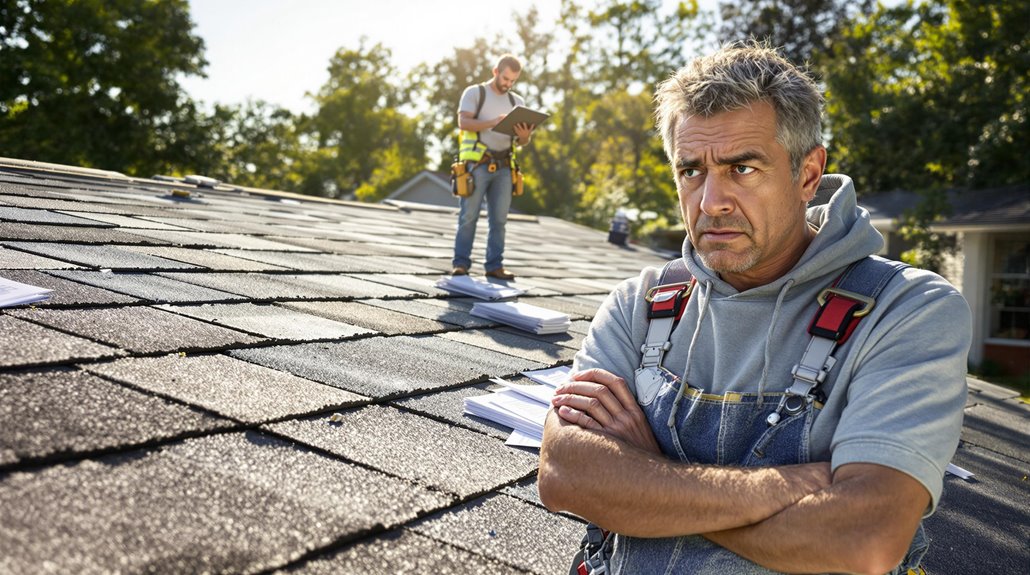
Failing to disclose a new roof installation to an insurance provider can result in serious coverage denials and claim rejections when homeowners need protection the most.
The financial consequences of non-disclosure often include higher out-of-pocket expenses, increased deductibles, and potential policy cancellations that leave homeowners vulnerable to significant losses.
Additionally, homeowners who withhold roof update information may face legal compliance issues for breaching their contractual obligations, potentially leading to adverse actions and regulatory penalties.
With insurance fraud losses reaching $40B annually, insurers have implemented advanced detection systems to identify undisclosed property improvements.
Coverage Denial Risks
Not informing insurance companies about a new roof installation can lead to serious coverage denial risks and policy complications.
Insurance policies require accurate information about property conditions to provide appropriate coverage levels and assess risk properly.
Failing to disclose roof updates can result in coverage gaps and outdated policy terms that may not reflect the current value of the home.
Insurance companies may implement insurance exclusions for undisclosed property modifications, potentially leaving homeowners financially vulnerable during claims.
Additionally, insurers can deny coverage if they discover that significant property changes weren't reported, as this violates policy compliance requirements.
The consequences can include policy cancellation, claim rejections, and increased out-of-pocket expenses when damage occurs to an undisclosed new roof.
Working with a public claims adjuster can help navigate complex coverage issues and ensure proper documentation of property updates to maximize protection.
Financial Impact Assessment
The financial consequences of withholding roof update information from insurance providers extend far beyond simple premium adjustments. Homeowners may face significant monetary impacts through inaccurate premium calculation, potentially paying higher rates due to outdated roof information. This oversight can result in missed discounts for new roof installations and elevated deductible assessments.
The financial implications compound when claims arise, as insurers may reduce payouts or deny coverage entirely upon discovering undisclosed roof updates. Homeowners could face substantial out-of-pocket expenses due to inadequate coverage levels and depreciation-based calculations.
Moreover, policy noncompliance may trigger cancellations or penalties, creating additional financial burdens. Accurate disclosure of roof updates guarantees proper coverage valuation and helps avoid unexpected costs while maintaining policy compliance. Working with independent agents provides access to multiple insurance companies for comparing coverage options and identifying potential savings on updated roof policies.
Legal Compliance Issues
Proper disclosure of roof updates to insurance providers carries significant legal implications for homeowners.
Failing to meet legal requirements regarding property modifications can result in serious consequences, including policy cancellations and coverage limitations.
Insurance compliance standards mandate that homeowners inform their providers about significant property changes, including roof replacements.
This obligation extends beyond insurance matters, as sellers must also disclose known roof conditions to potential buyers.
Failure to meet these disclosure requirements can lead to legal action, including misrepresentation claims and lawsuits for damages.
To maintain policy compliance and avoid legal disputes, homeowners should promptly notify their insurance company about new roof installations, providing detailed documentation of materials used and installation dates.
Regular maintenance and inspections further support compliance with policy terms.
The McCarran-Ferguson Act established state authority over insurance regulation and compliance requirements.
Steps to Notify Your Insurance Provider
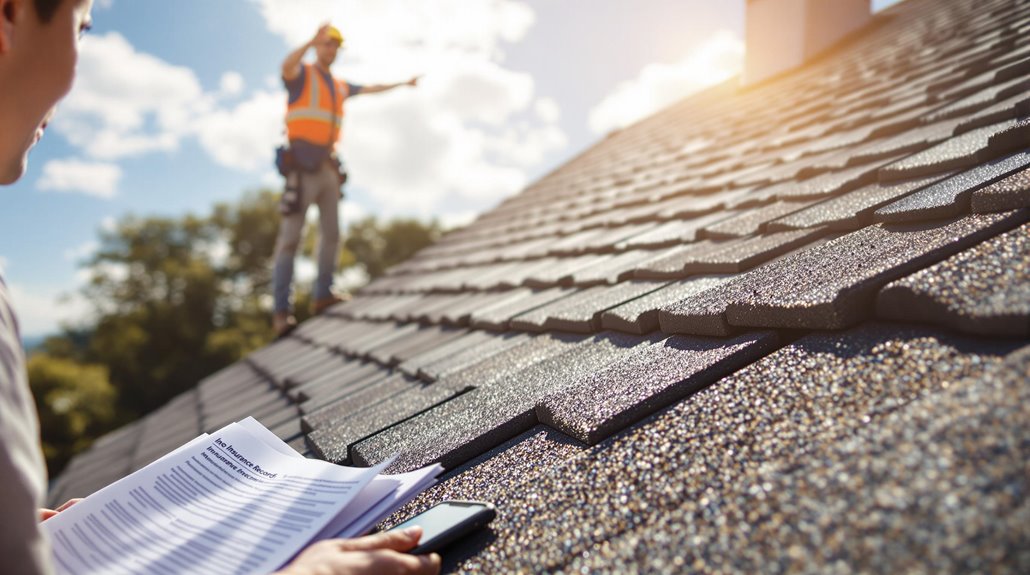
Notifying an insurance provider about a new roof installation requires following specific steps to guarantee proper documentation and policy updates. Property owners should begin by gathering essential information about the installation, including dates, materials used, and contractor details. Multiple Contact Options are available for reaching insurance representatives, including phone, email, or through an online portal. Open communication channels between homeowners and insurers help expedite claims processing and ensure accurate coverage updates.
| Step | Action | Timeline |
|---|---|---|
| 1 | Gather Documentation | Before Contact |
| 2 | Contact Insurance | Within 30 Days |
| 3 | Submit Records | Upon Request |
Documentation Timing is vital for policy updates. Homeowners must provide proof of installation through invoices, contracts, and photographs. Following notification, it's important to review any policy changes and confirm that records have been updated in the insurance company's system.
Essential Documentation You Need to Submit

Submitting complete documentation about a new roof requires careful attention to specific paperwork requirements. The documentation requirements include installation date records, detailed information about roofing materials, and contractor contact information.
Property owners must also maintain copies of invoices, contracts, and installation photographs.
A thorough submission checklist should include proof of installation, roof specifications, and warranty documentation. Insurance providers typically require inspection reports and copies of any permits obtained for the roof replacement.
Both digital and physical copies of these documents should be maintained for future reference. For verification purposes, homeowners should guarantee all materials are organized and readily accessible when submitting to their insurance provider. Prompt submission of these documents helps facilitate timely policy updates and claim processing.
Working with a public claims adjuster can help maximize your settlement potential when submitting roof documentation to insurance companies.
Impact on Insurance Premiums and Coverage
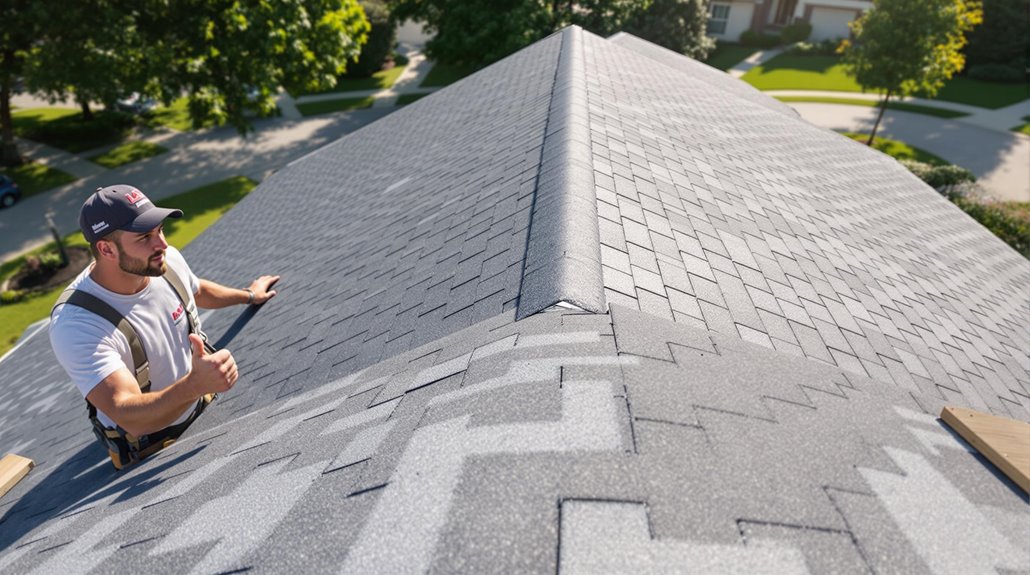
A new roof installation can substantially impact insurance premiums and coverage options for homeowners. The premium impact varies based on factors such as roofing material quality, local weather conditions, and compliance with building codes. Homeowners can expect potential discounts ranging from 5% to 35% on their insurance premiums after installing a new roof.
A thorough coverage assessment following roof replacement guarantees accurate policy limits and improved risk evaluation. The selection of durable materials and proper installation by certified contractors can maximize insurance benefits.
Additionally, implementing wind-resistant features and maintaining regular inspections contributes to long-term premium savings. Location-specific considerations in roof design and materials also play a vital role in determining insurance costs and maintaining ideal coverage levels. Gable roof designs require special consideration since they are more vulnerable to wind damage compared to other roof types.
What Insurance Companies Look for in Roof Updates
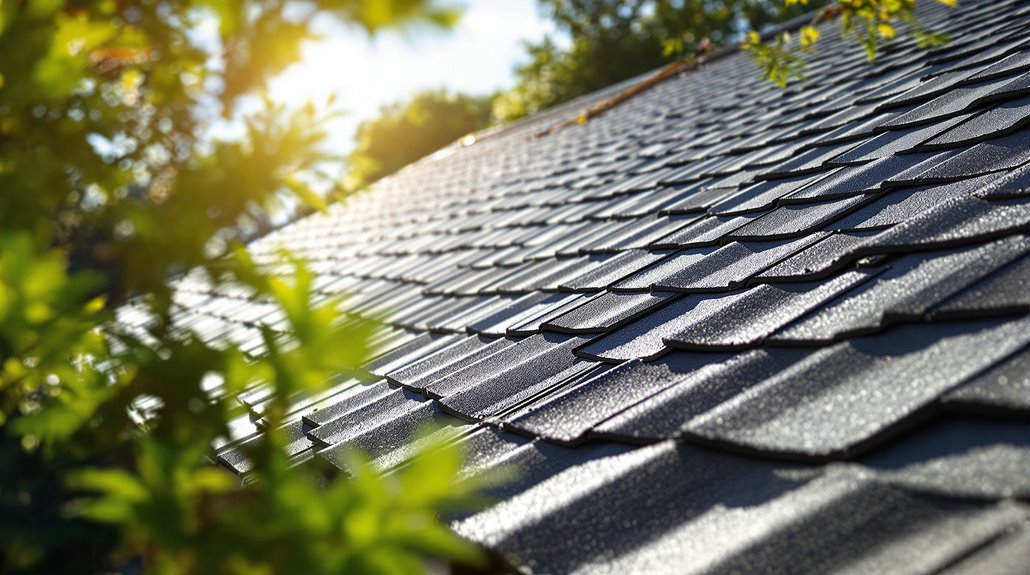
Insurance companies maintain specific criteria when evaluating roof updates on insured properties. They focus primarily on the installation date, material requirements, and contractor credentials. Insurance providers carefully assess the type of roofing materials used, with preference given to durable options like metal or high-quality asphalt shingles that meet inspection standards.
Documentation plays a vital role in this evaluation process. Insurers require detailed records including installation invoices, contractor information, and photographic evidence of the completed work.
They also examine compliance with local building codes and the implementation of proper maintenance protocols. Regular maintenance records and evidence of professional inspections can further demonstrate the roof's ongoing reliability, which insurance companies consider when determining coverage terms and premium adjustments. Working with public adjusters can increase insurance claim settlements by 20-800% while providing objective damage assessments and policy interpretation expertise.
Maximizing Insurance Benefits With Your New Roof
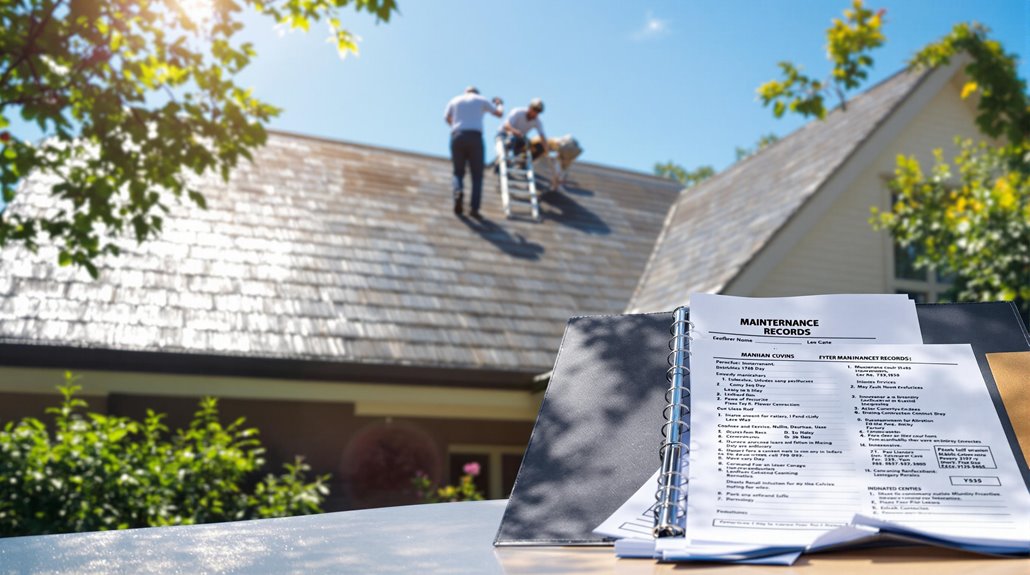
Maximizing insurance benefits after a roof installation requires strategic planning and proper documentation. Homeowners can optimize their coverage and potentially reduce premiums by following key insurance requirements and maintaining detailed records.
| Action | Insurance Benefit |
|---|---|
| Regular Inspections | Lower Premium Rates |
| Maintenance Records | Simplified Claims Process |
| Quality Materials | Enhanced Coverage Options |
To secure the best insurance benefits, homeowners should document all aspects of their new roof installation, including materials used, contractor credentials, and installation date. Establishing a routine maintenance schedule and keeping detailed records of all inspections and repairs is essential. Insurance providers look favorably upon proactive maintenance practices, often rewarding homeowners with reduced premiums and more extensive coverage options. Following these practices not only protects the investment but also streamlines future claims processes.
Understanding Policy Changes After Roof Installation
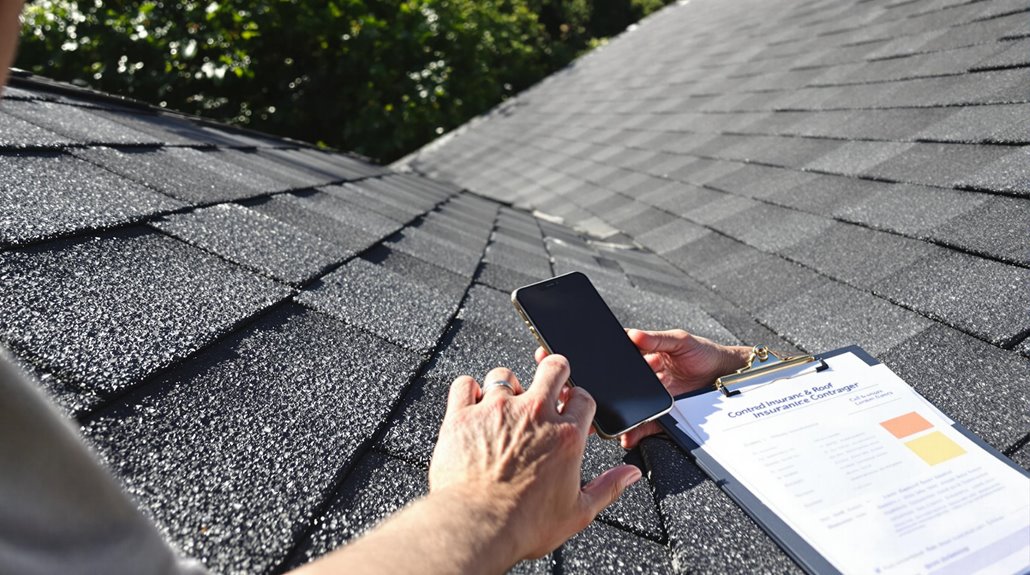
Following a roof replacement, homeowners must navigate several important policy changes to maintain proper insurance coverage. Insurance companies typically require notification of significant property upgrades to guarantee accurate policy terms and appropriate coverage levels.
Policy variations may occur based on factors such as roofing material durability, geographical location, and local weather patterns.
Premium adjustments often reflect these changes, with new roofs generally qualifying for lower rates due to reduced risk exposure. Insurance providers evaluate the updated property value and condition to determine appropriate coverage levels and potential cost savings.
To facilitate these changes, homeowners should document the installation date, materials used, and contractor information. This documentation helps insurers assess the property's current status and implement necessary policy modifications while ensuring compliance with regulatory requirements and maintaining adequate protection.
Best Practices for Maintaining Insurance Coverage
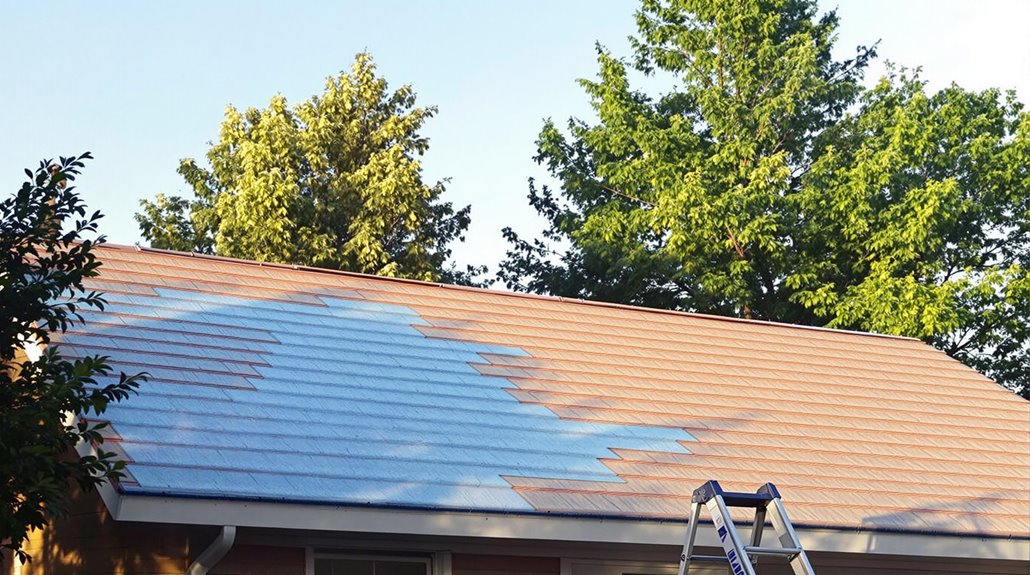
Maintaining complete insurance coverage requires a structured approach that combines diligent record-keeping, regular policy reviews, and proactive risk management strategies.
Effective coverage monitoring involves systematic documentation of property improvements and regular policy evaluations to guarantee maximum protection.
Key components of record validation include:
- Keeping detailed documentation of property modifications
- Maintaining accurate premium payment records
- Storing historical policy certificates
- Tracking all communication with insurance providers
- Documenting property maintenance schedules
Regular market evaluations every 2-3 years help guarantee competitive rates while maintaining adequate coverage.
Property owners should promptly notify insurers of significant improvements, such as new roof installations, to maintain accurate coverage and potentially benefit from premium reductions.
Additionally, implementing preventive measures and maintaining thorough documentation supports smoother claims processes and policy renewals.
The Benefits Of Consulting A Public Adjuster
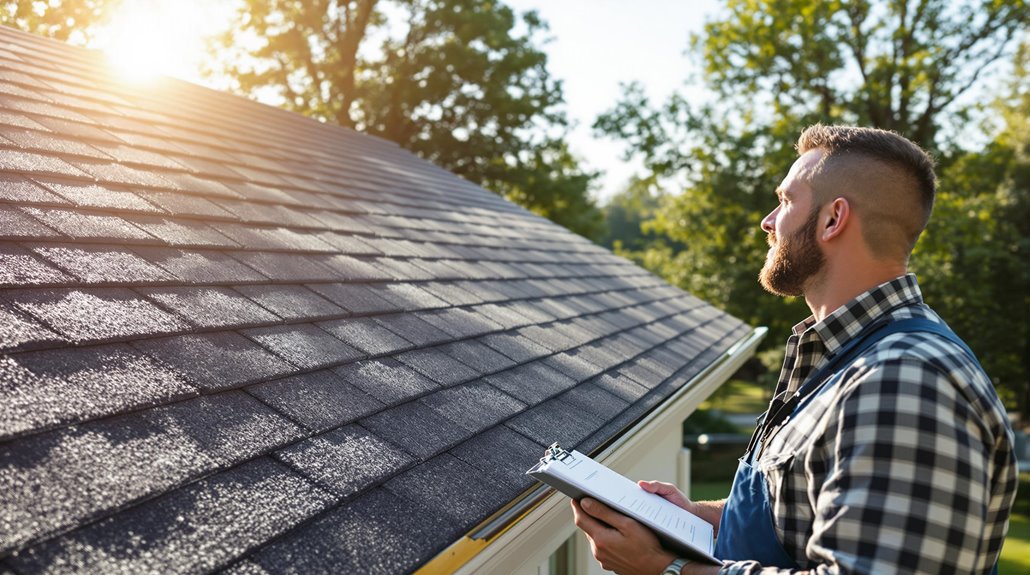
Public adjusters offer professional expertise in handling complex insurance claims through objective damage assessments and thorough policy interpretation.
Their experience in negotiating with insurance companies often leads to higher claim settlements while reducing stress for policyholders.
Expertise In Insurance Claims
When handling the complexities of insurance claims for a new roof, consulting a public adjuster can provide significant advantages due to their specialized expertise.
Their policy expertise enables thorough understanding of coverage details and claims management procedures, guaranteeing policyholders receive maximum benefits.
Public adjusters offer valuable knowledge in several key areas:
- In-depth interpretation of policy fine print and coverage limitations
- Professional documentation of roof damage and required repairs
- Skilled negotiation with insurance companies
- Strategic presentation of claims evidence
- Expert navigation of complex claims procedures
Their professional oversight helps guarantee accurate claim submission while protecting policyholder interests throughout the process.
Public adjusters' understanding of insurance company tactics and settlement procedures allows them to effectively advocate for fair compensation, making them valuable allies when dealing with roof-related claims.
Objective Damage Assessment
A thorough objective damage assessment forms the cornerstone of successful insurance claims for roof-related issues. Professional adjusters utilize systematic inspection methods to evaluate and document all damage indicators present on the roof structure. This complete evaluation includes detailed photographic evidence, written documentation, and precise measurements of affected areas.
Public adjusters bring specialized expertise to this process, applying standardized assessment protocols to identify both obvious and subtle forms of damage. They assess various damage indicators, from missing shingles to underlying structural issues, ensuring no detail is overlooked.
Their methodical approach includes analyzing the cause of damage, estimating repair costs based on current market rates, and preparing detailed reports that support negotiations with insurance companies. This systematic documentation helps secure fair settlements that accurately reflect the extent of roof damage.
Streamlined Claim Process
Building upon professional assessment findings, consulting a public adjuster offers homeowners significant advantages in streamlining their insurance claims process.
Through expert claim management, adjusters guarantee thorough documentation while coordinating with contractors and insurance companies to facilitate efficient resolution.
Key benefits of professional claim handling include:
- Complete paperwork organization and accurate documentation
- Expert interpretation of policy terms and coverage limits
- Professional representation in insurance company negotiations
- Reduced stress and time investment for homeowners
- Expedited processing through experienced management
Public adjusters work on contingency, aligning their interests with maximizing claim outcomes.
Their thorough understanding of insurance policies and procedures helps prevent delays, avoid coverage disputes, and ensure all eligible damages are properly documented.
This professional oversight allows homeowners to focus on recovery while maintaining confidence in the claims process.
Higher Claim Payouts & Settlements
Public adjusters consistently deliver higher claim settlements by leveraging their expertise in damage assessment and insurance policy interpretation. Their settlement strategies include thorough documentation of all damages, identification of hidden issues, and exhaustive policy reviews to guarantee maximum coverage utilization.
Through proven payout maximization techniques, public adjusters negotiate persistently with insurance companies, often securing settlements substantially higher than what policyholders might obtain independently. Their objective assessments and detailed understanding of insurance regulations strengthen negotiating positions.
Statistical evidence supports that engaging a public adjuster typically results in larger claim payouts, as they effectively counter insurance company tactics while guaranteeing all legitimate damages are properly valued. Their independent representation ensures unbiased evaluations focused solely on protecting the policyholder's interests throughout the claims process.
About The Public Claims Adjusters Network (PCAN)
The Public Claims Adjusters Network (PCAN) serves as a professional alliance connecting licensed public adjusters across the United States, fostering collaboration and establishing industry standards for policyholder representation.
Through network partnerships and structured adjuster communication, PCAN guarantees consistent quality service delivery across state lines.
Members of PCAN must maintain:
- Active state licensing and compliance with regulatory requirements
- Documented expertise in claims assessment and negotiation
- Commitment to transparent fee structures and ethical practices
- Regular participation in professional development programs
- Adherence to standardized documentation and reporting protocols
This network strengthens the public adjusting profession by facilitating knowledge sharing, maintaining high service standards, and protecting policyholder interests through coordinated advocacy efforts.
PCAN members leverage collective expertise to deliver maximum outcomes for insurance claims across various property types and damage scenarios.
Frequently Asked Questions
Can I Switch Insurance Providers Immediately After Installing a New Roof?
Homeowners can switch insurance providers after a new roof installation, ensuring proper coverage transfer and insurance timing. Documentation of the installation should be submitted during the application process for accurate policy assessment.
Will My Insurance Cover Damage That Occurs During Roof Installation?
Standard homeowners insurance typically doesn't cover material damage during installation. Contractors' liability insurance should address installation-related damages, making it essential to verify contractors maintain appropriate coverage before work begins.
How Long Does Roof Certification From Insurance Companies Typically Last?
Insurance companies typically issue roof certifications lasting 2-5 years, with inspection intervals varying by region and policy requirements. Coverage duration depends on roof condition, material type, and local regulations.
Should I Notify My Insurance if Only Partial Roof Repairs Were Done?
Homeowners should notify insurance companies about partial roof repairs to maintain valid partial coverage and prevent future claim denials. Proper repair documentation guarantees compliance with policy requirements and protects coverage eligibility.
Can Insurance Companies Require Specific Roofing Contractors for Installation Work?
Insurance companies cannot require specific roofing contractors. While they may suggest preferred vendors, homeowners maintain the right to choose any licensed contractor after proper license verification and insurance checks.
References
- https://www.nolo.com/legal-encyclopedia/arizona-home-sellers-disclosures-required-under-state-law.html
- https://bestexteriorsinc.com/blog/tell-insurance-about-new-roof/
- https://artisanqualityroofing.com/how-to-get-insurance-to-pay-for-roof-replacement/
- https://rapidroofing.com/blog/do-you-need-to-tell-insurance-about-new-roof-maximizing-benefits-coverage-mi-oh/
- https://www.tdi.texas.gov/tips/replacing-your-roof.html
- https://sup.ai/articles/insurance/why-you-should-inform-your-insurance-company-about-a-new-roof
- https://www.hertvik.com/lower-your-homeowners-insurance-costs-notify-them-of-recent-roof-replacement/
- https://www.angi.com/articles/will-a-new-roof-lower-insurance.htm
- https://www.fciq.ca/save-and-invest/yes-a-new-roof-can-slash-your-state-farm-insurance-premium-heres-how-much/
- https://clovered.com/will-a-new-roof-lower-my-insurance-premiums/
